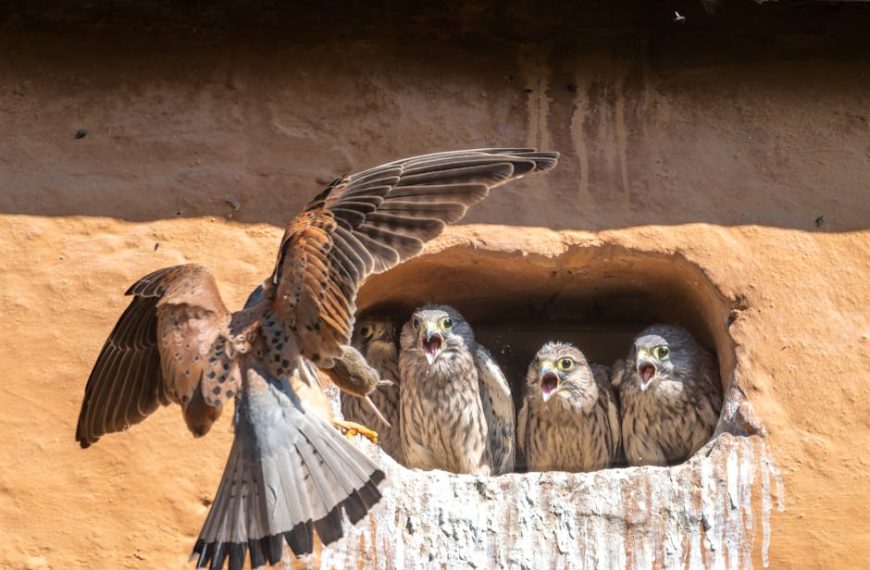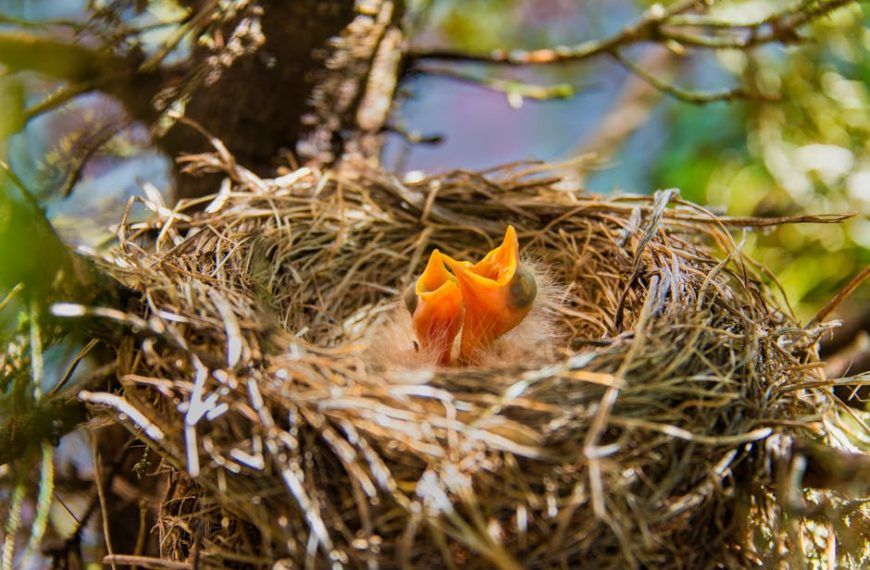Birds possess a myriad of mating systems, executing a complex interplay of rituals and behaviors to ensure the survival of their species. Ranging from elaborate plumage displays to harmonious sonnets, these strategies successfully attract mates and ultimately instigate reproduction. This article will shed light on how this intricate process unfolds within the avian kingdom.
Understanding the Basics of Bird Mating Systems
In the avian world, reproductive systems are as diverse as bird species themselves. Monogamy, where one male mates with one female for a season or even for life, can be seen in species such as swans and puffins. Alternatively, polygamy—where a bird has multiple mates—characterizes the mating behavior of species such as the red-winged blackbird and the domestic chicken.
Each system carries a set of advantages and downsides. Monogamy ensures more secure parenting but confines genetic spread to one partner. Polygamy allows for larger genetic diversity but may minimize the time and resources a parent can devote to each offspring.
Pros and Cons Comparison
| Mating System | Pros | Cons |
|---|---|---|
| Monogamy | Secure Parenting, Reduced Competition | Limited Genetic Diversity |
| Polygamy | Larger Genetic Diversity | Minimal Parenting Per Offspring |
How Birds Find and Attract Mates
Birds adopt a variety of elaborate methods to attract a potential mate. Fascinatingly the males of many species tend to be the ‘performer,’ aiming to impress the females with their songs, intricate dances, and elaborate nest constructions.
A classic example of this ostentatious behavior is the male peacock, who fans out his magnificent plumage in a courtship display. Equally impressive are the complex songs of the nightingale, which can mesmerize a potential mate.
However, beyond the song and dance, females play a crucial role in mate selection. It’s often the female’s choice that concludes the courtship, deciding based on the quality of the display or song she observed.
Pro tip: Birdwatchers and enthusiasts can enhance their experience by observing these remarkable courtship behaviors during the mating season – just remember to maintain a respectful distance and avoid any disruptive behavior.
Bird Mating Process: From Courtship to Copulation
Bird mating – from courtship to copulation, is a complex process with each step playing a crucial role. Once a female has chosen her mate, the actual act of mating can occur.
Most birds mate through a process termed ‘cloacal kiss,’ where the male and female touch their cloaca (a multipurpose opening for excretion and egg-laying) together, exchanging sperm. A visual checklist can explain this process further:
- ✅ The male approaches the female.
- ✅ Mutual grooming or ‘preening’ may occur.
- ✅ The male mounts the female, aligning their cloacas.
- ✅ Cloacal kiss occurs, and sperm transfer takes place.
However, a small fraction of birds, including ducks and ostriches, have a different method. They possess an organ akin to a mammalian penis, contributing to a competitive arena of sperm competition. The occurrence of such a mechanism prompts a look into the astounding diversity within the realm of avian reproduction. Each species, with its unique strategies and behaviors, contributes to a grand tapestry of life. We will continue to unravel this in the next segments.
The Role of Nests in Birds’ Reproductive Cycle
Just as important as attracting a mate and copulating, is the construction of nests by birds – it is an essential part of the avian reproductive cycle. A nest not only provides a secure location for eggs and chicks but can also function as a ‘showpiece’ in the courtship process.
Birds use a variety of materials for nest building, ranging from grass and twigs to feathers, mud and even man-made objects. Some examples include the simple cup-shaped nests of robins, the intricate hanging nests of weaver birds, and the gigantic communal nests of sociable weavers.
Nest maintenance is a cooperative affair in many species, with both males and females typically contributing throughout their offspring’s development period.
Male vs Female Involvement
| Species | Male Contribution | Female Contribution |
|---|---|---|
| Bald Eagle | Helps build and repair nest | Incubates eggs, cares for chicks |
| African Penguin | Helps incubate eggs | Gathers food, cares for chicks |
Avian Incubation and Chick Rearing: A Parental Responsibility
Once eggs are laid, the next stage of the bird reproductive cycle begins – incubation. This can range from about 10 days in small species like the zebra finch to over two months in some of the larger species like the bald eagle. The parents’ involvement during this period varies considerably among species.
Post-hatching, chicks undergo various stages of growth. They start as helpless chicks, eventually become fledglings learning to fly, and finally attain youth, ready to begin the mating cycle on their own.
Timeline: Chick Growth Stage
| Stage | Actions |
|---|---|
| Chick | Feeding and protection by parents |
| Fledgling | Learning to fly, still being fed by parents |
| Youth | Self-sustained, starts individual mating cycle |
Bird parenting is a spectrum of diversity. While in some species like the emperor penguin, males play an equally or more active role in bringing up the young, others, like the cuckoo, rely on other species for raising their chicks.
Pro tip: The seasons of nesting, incubation, and fledging provide a wonderful opportunity for birdwatchers to observe and learn from these breathtaking processes in nature. However, remember to be responsible observers. Avoid disturbing birds, particularly during these crucial periods of their lifecycle, as it can negatively impact their survival rates.
This journey, from courtship to chick rearing, throws light upon the intriguing mechanisms of avian reproduction. Understanding these processes not only deepens our admiration for these feathered creatures but also underlines the importance of conserving their habitats to ensure the continuity of these fascinating life cycles.
Key Takeaway:
- Bird mating systems are varied, existing in forms such as monogamy and polygamy, depending on the species.
- Birds conduct intricate courtship behaviors, including song, dance, and nest construction, to attract mates.
- Most birds use a method called cloacal kiss for mating. Still, a few species like ducks and ostriches have a separate reproductive organ similar to mammalian penis.
- Nesting plays a crucial role in the avian reproductive cycle, with both male and female often involved in nest construction and maintenance.
- The incubation period varies significantly among bird species, as does parenting style during chick rearing.
In conclusion, every aspect of avian mating, from courtship to chick rearing, highlights the intriguing and complex mechanisms of survival and reproduction in the bird kingdom. So, as bird watchers or nature enthusiasts, we can better appreciate these awe-inspiring processes and stress the importance of preserving their habitats.
FAQs
Q: Do all birds use the same method of mating?
A: No, most birds mate using a method called the cloacal kiss, but some species like ducks and ostriches possess a separate reproductive organ similar to the mammalian penis.
Q: Are there certain times of the year when birds mate?
A: Yes, birds usually mate during a certain span of the year known as mating or breeding season, which may vary between species.
Q: How do birds choose their mates?
A: Often, the male impresses a female with courtship rituals, like song or dance. Ultimately, it’s the female who decides which male she will mate with based on these performances.
Q: Do all bird species share the same parenting style?
A: No, the involvement of both parents during the incubation and chick-rearing stages varies widely across different bird species.
Q: How do nests play a role in the bird breeding cycle?
A: Nests provide a safe and secure location for laying eggs and raising chicks. The female often chooses a mate based on his ability to construct a good nest in some cases.
If you wish to learn more about the exciting world of birds, feel free to explore more articles on our website or share this one with fellow bird enthusiasts.












